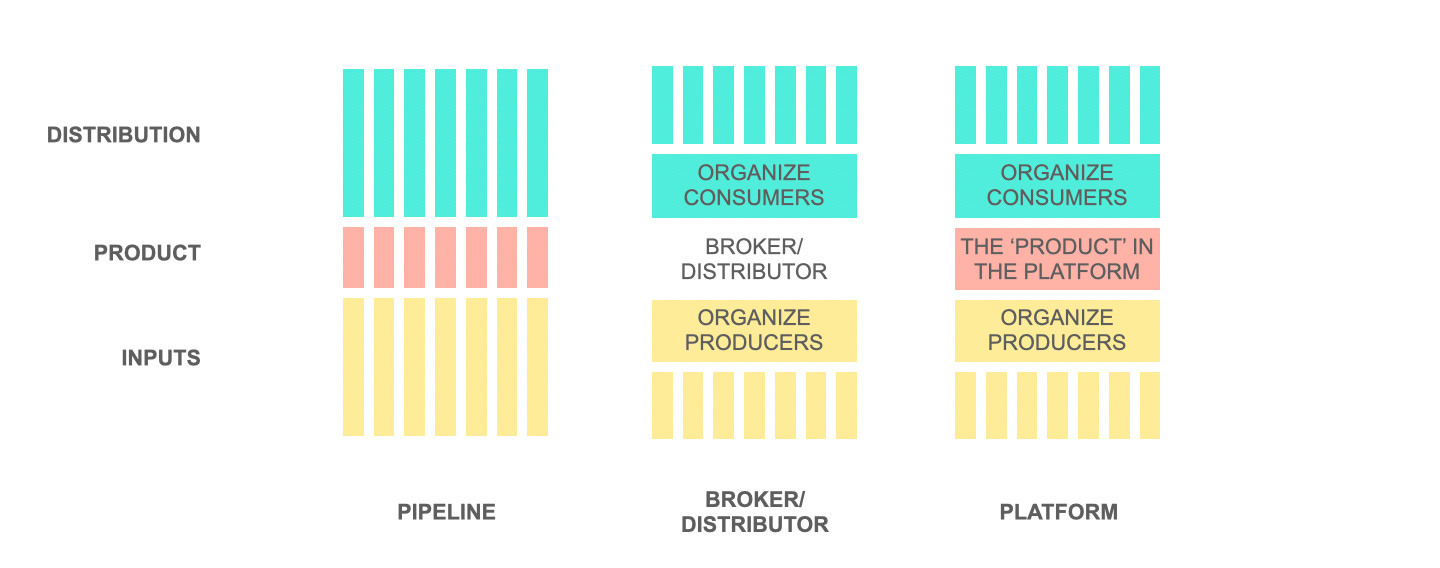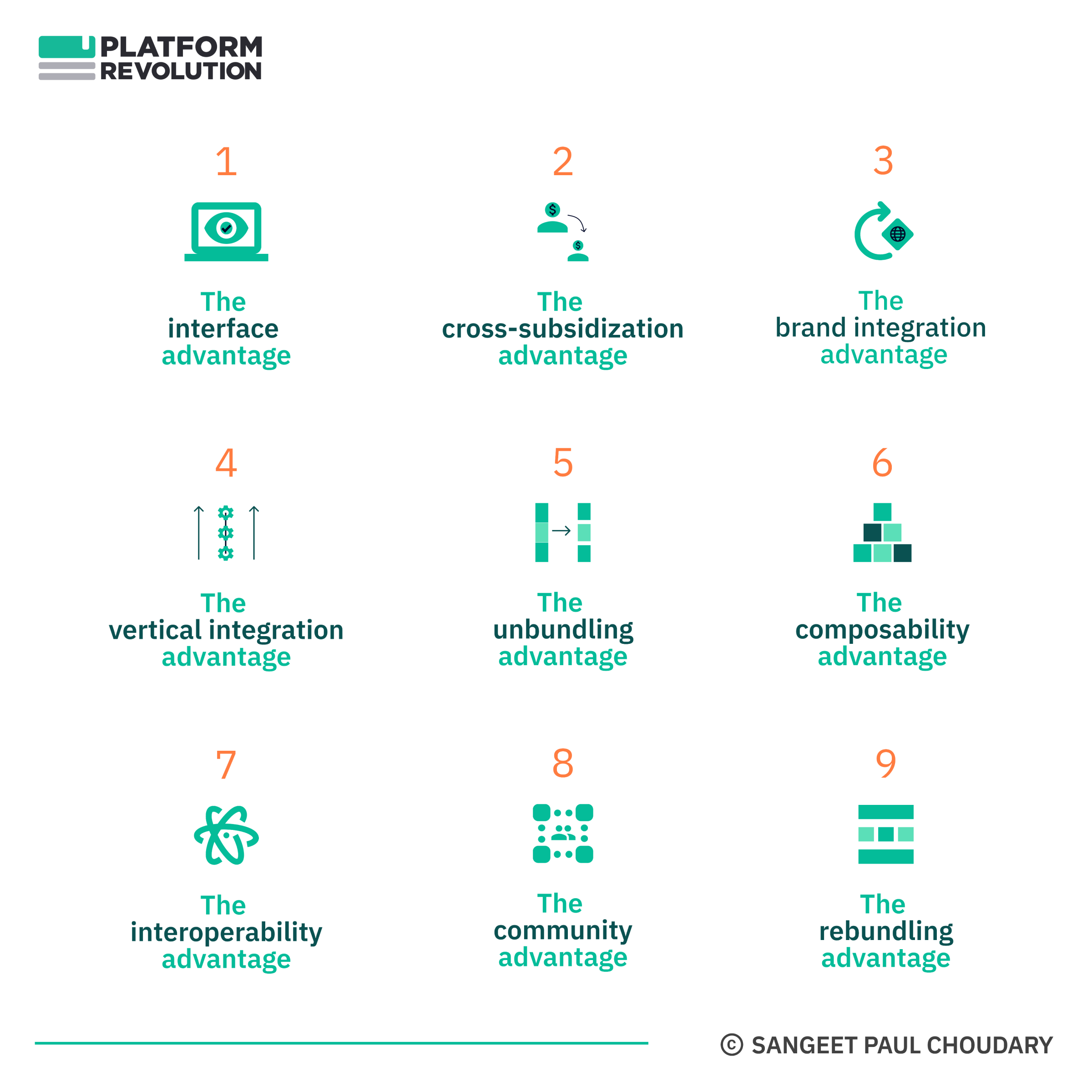Strategy
The intersection of freemium, networks and marketplaces
One of the early stage startups that I advise is currently facing the mutual baiting problem. In a marketplace, each side acts as bait for the other to come on board. But, to begin with, you have neither side on board, and that results in a deadlock because neither side will come on board without the other. I’d like to share a pattern that emerged while brainstorming on this problem.
A platform’s main role is promoting interaction between its participants. The revenue model of most platforms is typically some form of monetization of this interaction. As a result, most platforms start with the goal of monetizing all possible interactions.
Enter: The Freemium Marketplace
Ticket booking has been around for quite sometime but Eventbrite has gained unprecedented traction in this space. Ticketmaster was around when Eventbrite came out but instead of competing head on, Eventbrite has created a market for itself by converting non-consumption.
How did that happen?
Eventbrite turned on a simple Freemium implementation of the marketplace. Most ticket booking services allow only paid ticketing because that’s where there is monetization potential. Eventbrite tried something disruptive by allowing users to set up ticketing for events which were unpaid. And users could do that for free!
This opened up a whole new market for the company because nobody had been targeting the neighborhood parties and corporate events which are typically free to attend but do not have an aggregator ticketing solution. This enabled Eventbrite to gain traction among users and every time an event organizer sent out invites, users would come to know about the service and some of them would set up events of their own. And some of them would require paid ticketing. Hence, Eventbrite built up an interesting Freemium funnel where free users would end up inviting paid users without potentially ever converting to pay themselves.
I feel a freemium approach to building a platform can really help gain initial traction but the model should have costs that scale reasonably and are manageable and should have reasonably high conversions to paid premiums.
Feel Free to Share
Download
Download Our Insights Pack!
- Get more insights into how companies apply platform strategies
- Get early access to implementation criteria
- Get the latest on macro trends and practical frameworks
And, of course, the Freemium social network
Exclusive networking groups have existed both online and offline. However, the problem with getting an exclusive networking club started, often, is the exclusivity itself. There typically is a fee to keep out irrelevant members. The problem with this system is that most of these filters to weed out members are imposed at the first step which potentially prevent the group from including every possible member out there.
LinkedIn turned this model around on its head by making the filters an afterthought. Everyone can join LinkedIn for free, but if you need exclusive networking capabilities, you pay a premium. This ensured that LinkedIn targeted the entire market and built out the network while allowing different levels of network access to different members. This prevents the non-premium members from reaching out to everyone and allows exclusive access to premium members.
Free helps gain traction, Paid monetizes
What works for one-sided services works for two-sided platforms but given the problem with getting initial traction on both sides on a platform, this solution is all the more potent in the case of platforms.
In general, marketplaces do not monetize each and every user, but they do try to maximize monetization of user interactions. However, the typical model is to filter out the unpaid transactions at the top of the funnel itself by not supporting such transactions. This can make the initial seeding all the more challenging.
As with all Freemium, there is a cost to supporting interactions:
Ning grew rapidly as a network of networks. Many observers expected it to become the ultimate uber-social network encapsulating all other networks. But Ning was a glaring example of the failure of the Freemium model for platforms. In a two-sided business, more than a one-sided business, the cost of Freemium can be very high. This is because you are not supporting merely free users, you are also supporting free groups and free interactions. Ning famously turned off Freemium and converted to a fully paid model when the economics stopped making sense.
Overall, I feel a freemium approach to building a platform can really help gain initial traction but the model should have costs that scale reasonably and are manageable and should have reasonably high conversions to paid premiums.
State of the Platform Revolution
The State of the Platform Revolution report covers the key themes in the platform economy in the aftermath of the Covid-19 pandemic.
This annual report, based on Sangeet’s international best-selling book Platform Revolution, highlights the key themes shaping the future of value creation and power structures in the platform economy.
Themes covered in this report have been presented at multiple Fortune 500 board meetings, C-level conclaves, international summits, and policy roundtables.
Subscribe to Our Newsletter













